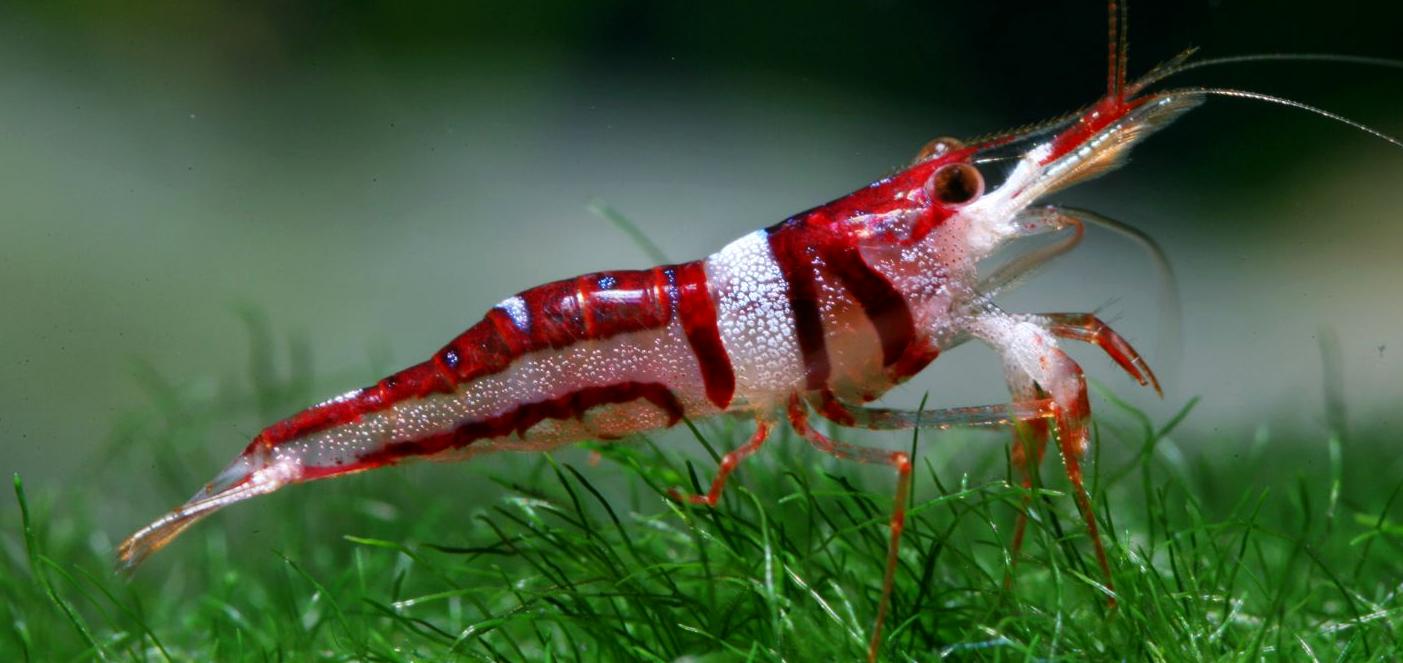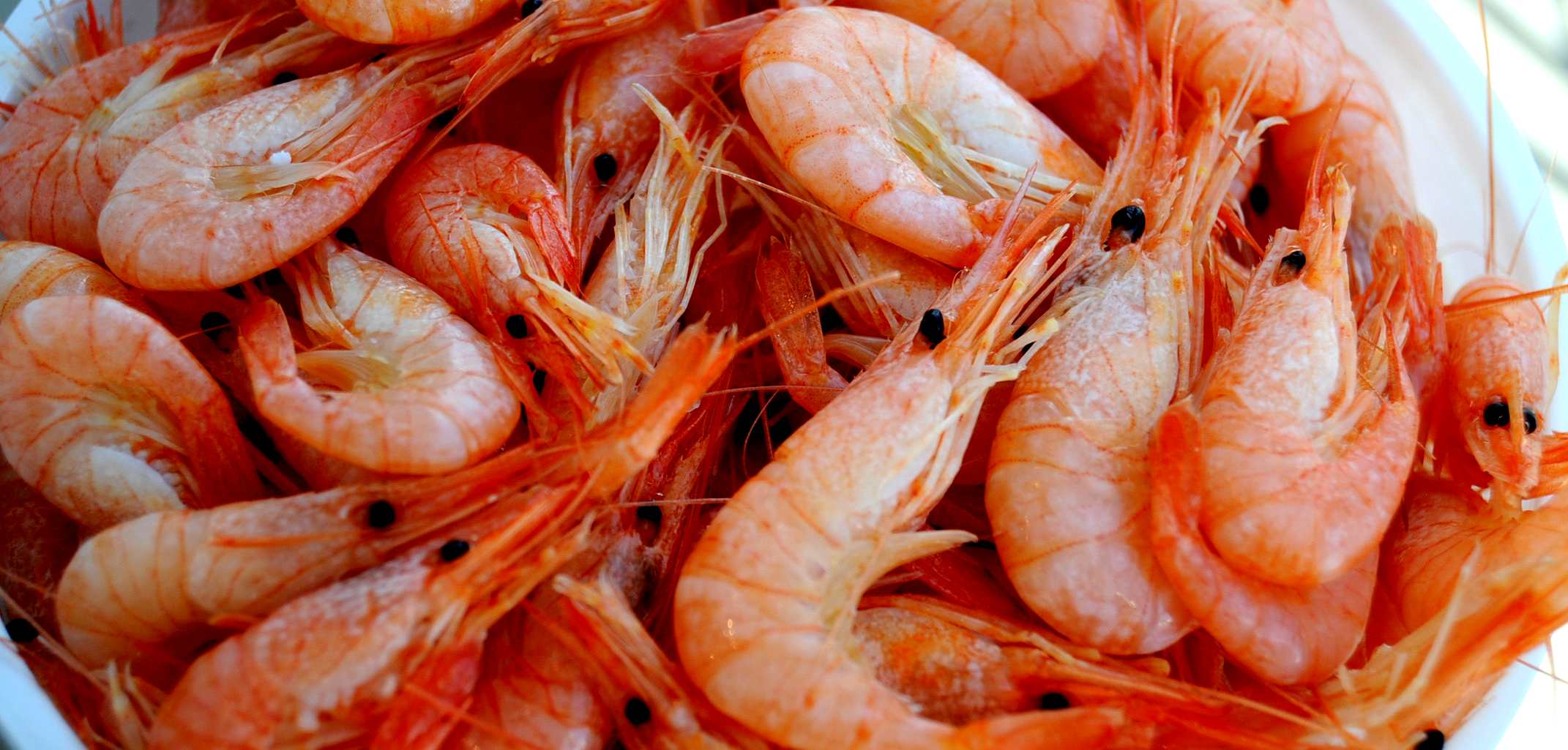|
SHRIMPS
ABOUT
-
HOME - WHALING - A-Z INDEX
Anchovies
| Bass
| Bream
| Catfish
| Clams
| Cod
Coley
| Crabs
| Crayfish
| Eels
| Grouper
| Haddock
| Hake
| Halibut
| Herring
| Jellyfish
Krill
| Lobster
| Mackerel
| Marlin
| Monkfish
| Mullet
| Mussels
| Oysters
| Perch
| Piranha |
Plaice
| Pollock
| Prawns
| Rays
| Sablefish
| Salmon
Sardines
| Scallops
| Sharks
| Shrimp
| Skate
| Sole
| Sprat
| Squid
| Sturgeon
| Swordfish
| Trout
| Tuna
| Turbot
| Whiting

GIANT
TIGER PRAWN
- A favourite in Chinese dishes as served in restaurants.
In
an effort to feed a
growing population we should look at
alternatives lower down the food chain to increase the ratio
at which protein is harvested from the ocean, so bypassing the
conventional food chain where at each stage of consumption
there are significant losses in the conversion process. Jellyfish,
squid, krill
and filter feeders such a mussels could play a part in filling the widening gap between falling
fish stocks and higher demand to feed humans - so
relieving the pressure on tuna, salmon and other popular white
fish.
ABOUT
SHRIMPS
Shrimp are swimming crustaceans with long narrow muscular abdomens and long antennae. Unlike crabs and lobsters, shrimp have well developed pleopods (swimmerets) and slender walking legs; they are more adapted for swimming than walking. Historically, it was the distinction between walking and swimming that formed the primary taxonomic division into the former suborders Natantia and Reptantia. Members of the Natantia (shrimp in the broader sense) were adapted for swimming while the Reptantia (crabs, lobsters, etc.) were adapted for crawling or walking. Some other groups also have common names that include the word "shrimp"; any small
swimming crustacean resembling a shrimp tends to be called one.
Shrimp are widespread, and can be found near the seafloor of most coasts and estuaries, as well as in rivers and lakes. There are numerous species, and usually there is a species adapted to any particular habitat. Most shrimp species are marine, although about a quarter of the described species are found in fresh
water. Marine species are found at depths of up to 5,000 metres (16,000 ft), and from the tropics to the polar regions.
Although there are thousands of species of shrimp worldwide, only about 20 of these species are commercially significant. The following table contains the principal commercial shrimp, the seven most harvested species. All of them are decapods; most of them belong to the Dendrobranchiata and four of them are penaeid shrimp.

FISHING
Commercial techniques for catching wild shrimp include otter trawls, seines and shrimp baiting. A system of nets is used when trawling. Baited traps are common in parts of the Pacific Northwest.
Shrimp trawling can result in very high incidental catch rates of non-target species. In 1997, the FAO found discard rates up to 20 pounds for every pound of shrimp. The
world average was 5.7 pounds for every pound of shrimp. Trawl nets in general, and shrimp trawls in particular, have been identified as sources of mortality for species of finfish and cetaceans. Bycatch is often discarded dead or dying by the time it is returned to the sea, and may alter the ecological balance in discarded regions. Worldwide, shrimp trawl
fisheries generate about 2% of the world's catch of fish in weight, but result in more than one third of the global bycatch total.
The most extensively fished species are the akiami paste shrimp, the northern prawn, the southern rough shrimp, and the giant tiger prawn. Together these four species account for nearly half of the total wild capture. In recent years, the global capture of wild shrimp has been overtaken by the harvest from farmed shrimp.

FARMING
Commercial shrimp farming began in the 1970s, and production grew steeply, particularly to match the market demands of the United States, Japan and Western Europe. The total global production of farmed shrimp reached more than 1.6 million tonnes in 2003, representing a value of nearly 9 billion U.S. dollars. About 75% of farmed shrimp are produced in Asia, in particular in China, Thailand, Indonesia, India and Vietnam. The other 25% are produced mainly in Latin America, where Brazil is the largest producer. By 2016, the largest exporting nation is India, followed by Ecuador, Thailand, Indonesia and China.
As can be seen from the global production chart on the left, significant
aquaculture production started slowly in the 1970s and then rapidly expanded during the 1980s. After a lull in growth during the 1990s, due to pathogens, production took off again and by 2007 exceeded the capture from wild fisheries. By 2010, the aquaculture harvest was 3.9 million tonnes, compared to 3.1 million tonnes for the capture of wild shrimp.
In the earlier years of marine shrimp farming the preferred species was the large giant tiger prawn. This species is reared in circular holding tanks where they think they are in the open
ocean, and swim in "never ending migration" around the circumference of the tank. In 2000, global production was 630,984 tonnes, compared to only 146,362 tonnes for whiteleg shrimp. Subsequently, these positions reversed, and by 2010 the production of giant tiger prawn increased modestly to 781,581 tonnes while whiteleg shrimp rocketed nearly twenty-fold to 2,720,929 tonnes. The whiteleg shrimp is currently the dominant species in shrimp farming. It is a moderately large shrimp reaching a total length of 230 mm (9"), and is particularly suited to farming because it "breeds well in captivity, can be stocked at small sizes, grows fast and at uniform rates, has comparatively low protein requirements... and adapts well to variable environmental conditions." In China, prawns are cultured along with sea cucumbers and some fish species, in integrated multi-trophic systems.
The major producer of farmed shrimp is China. Other significant producers are Thailand,
Indonesia,
India, Vietnam,
Brazil, Ecuador and Bangladesh. Most farmed shrimp is exported to the United States, the
European Union and
Japan, also other Asian markets, including
South
Korea, Hong Kong, Taiwan and Singapore.
Investigations by The Guardian in 2014 and The Associated Press in 2015 found human rights abuses on
fishing boats operated by Thailand. The boats are manned with slaves, and catch shrimp and fish (including fish for the production of fishmeal which is fed to farmed prawns). Greenpeace has challenged the sustainability of tropical shrimp
farming practices on the grounds that farming these species "has led to the destruction of vast areas of mangroves in several countries and over-fishing of juvenile shrimp from the wild to supply farms."
Greenpeace has placed a number of the prominent tropical shrimp species that are farmed commercially on its seafood red list, including the whiteleg shrimp, Indian prawn and giant
tiger shrimp.
In 2010, Greenpeace International has added the whiteleg shrimp to its seafood red list. This lists fish that are commonly sold in supermarkets around the world, and which have a very high risk of being sourced from unsustainable fisheries. The reasons given by
Greenpeace were "destruction of vast areas of mangroves in several countries, overfishing of juvenile shrimp from the wild to supply shrimp farms, and significant human rights abuses".
LINKS
& REFERENCE
https://

MARINE
LIFE - This humpback whale is one example of a magnificent
animal that is at the mercy of human
activity. Humans are for the most part unaware of the harm their fast-lane
lifestyles are causing. We aim to change that by doing all we
can to promote ocean
literacy.
Anchovies
| Bass
| Bream
| Catfish
| Clams
| Cod
Coley
| Crabs
| Crayfish
| Eels
| Grouper
| Haddock
| Hake
| Halibut
| Herring
| Jellyfish
Krill
| Lobster
| Mackerel
| Marlin
| Monkfish
| Mullet
| Mussels
| Oysters
| Perch
| Plaice
| Pollock
| Prawns
| Rays
| Sablefish
| Salmon
Sardines
| Scallops
| Sharks
| Shrimp
| Skate
| Sole
| Sprat
| Squid
| Sturgeon
| Swordfish
| Trout
| Tuna
| Turbot
| Whiting
This
website is provided on a free basis as a public information
service. Copyright © Cleaner
Oceans Foundation Ltd (COFL) (Company No: 4674774)
2022. Solar
Studios, BN271RF, United Kingdom.
COFL
is a charity without share capital.
|



